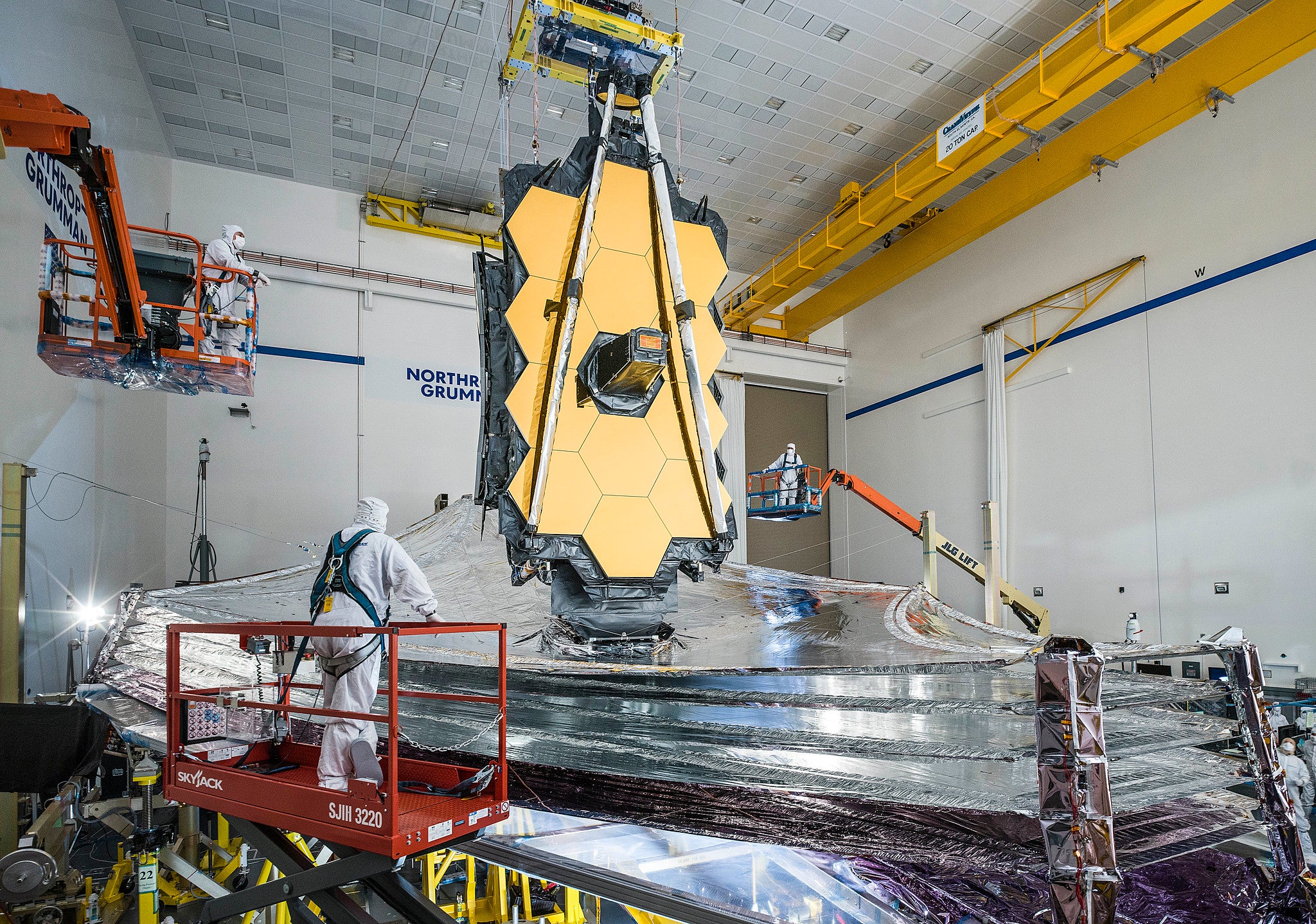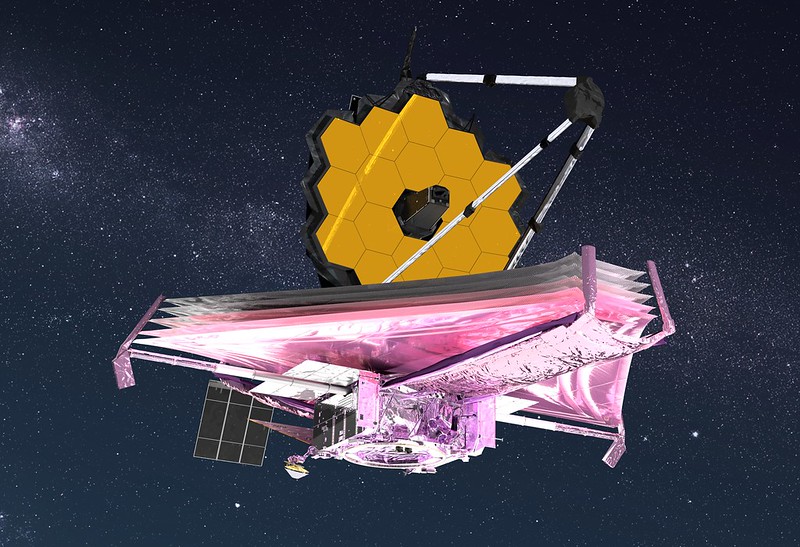
The James Webb Space Telescope’s 30 Day Journey
The JWST is one of the most incredible and complex telescopes ever built. In order for it to reveal invaluable information about the universe and more, it not only needs to reach its destination but also fully unfold and deploy without a single error. Multiple decades and billions of dollars have gone into this one piece of technology that is set to fold and launch on top of a rocket deep into space.
However, the James Webb Space Telescope’s job is just getting started once in space. After being launched the JWST will complete a large list of necessary tasks over the next 30 days. Each of these helps not only unfold and prepare the telescope but ensures it reaches the correct destination. In addition, every single part needs to go perfectly in order for Webb to work properly.
With around 50 major deployments depending on how you categorize them and 178 release mechanisms, the JWST will be very busy over the first 30 days. Each day brings a new necessary action, release, or engine burn working towards the successful mission. In addition, there will be no option for humans to intervene and fix a problem if one presents itself. Here I will go more in-depth into each step and process Webb will go through on the first 30 days after the launch.
JWST Background

Very soon the James Webb Space Telescope will take off into space. However, once out of the atmosphere the large telescope still has a lot of work to do prior to being ready. Webb will launch on top of the ESA’s Ariane 5 rocket which is one of the most powerful launch vehicles and more importantly one of the largest fairings. Currently, Webb is in Kourou French Guiana at the ESA Launch Facility. When placed within the fairings of the Ariane 5 it will be in a very compact configuration and encapsulated. Webb has around a 1 million mile journey to L2. Over the course of this trip, the telescope will go through a number of deployments and more in order to reach its destination and be ready to start gathering information. I will go more in-depth into some of the major deployments and general actions the JWST will go through in the first 30 days after launch. Each of these deployments is necessary and cannot go wrong in order for the James Webb Space Telescope to work properly.
The 30 Days After Launch

1 To 10 – Starting at the beginning of the trip to L2 you have the initial launch and the first to the tenth day of deployment. This stage hosts the majority of deployments throughout the long journey. The Ariane 5 has lifted off and 27 minutes into the mission the upper stage separates from the James Webb Space Telescope. Only 6 minutes later the solar array is deployed automatically allowing Webb to generate its own power. 12.5 hours after launch there is a mid-course correction burn. This burn fine-tunes Webb’s trajectory after launch and the burn time depends on the Ariane 5 performance prior. About 1 day after launch the gimbaled antenna assembly is rotated to its parked positions pointed back towards Earth.
After two days Webb performs an additional mid-course correction burn. 3 days in the forward sunshield pallet begins its deployment phase. Soon after the aft sun shield pallet is deployed before the fourth day when the deployable tower assembly or DTA is deployed. 5 days in the aft momentum flap is deployed to help offset some of the solar pressure. On the same day, the sunshield covers release exposing the shield. On the sixth day both the port and starboard sunshield boom are deployed which extends the shield out. The days 7 and 8 Webb works to tension the multiple layers of the sun shield. Finally, on day 10 you have the secondary mirror deployment.
11 To 24 – While a large portion of Webb has been deployed by this time, it is not done yet. Starting on day 11 you have the aft instrument radiator deployment. 12 days after launch marks the start of the primary mirror deployment phase. Here the port primary mirror wing is deployed and latched in place. The next day the starboard primary mirror wing is deployed and latched. On day 13 if everything has gone according to plan then Webb reaches a huge milestone. At this point, Webb is fully deployed 13 days after launch. From here the JWST still has a lot of work to do. For the next two weeks, Webb will travel to L2 at which point it will enter a large orbit around this specific spot. Now that the JWST is deployed, it’s time to fine-tune different important aspects of the telescope.
On days 15 through 24 after launch, Webb will go through many different individual mirror segment movements. This operation is a multi-day multi-step activity to activate and move each of the telescope’s 18 primary mirror segments. These are moved by six actuators that are attached to the back of each mirror piece. In addition, the primary mirror segments have another actuator designed for adjusting curvature. While all this happens the telescope’s tertiary mirror remains stationary.
25 To 30 – At this point in the mission the main focus is on getting Webb to the correct orbit. While there are fewer steps in this process it is still vital to the mission and the future of the JWST. One of the major steps in this time frame is the L2 insertion burn which happens on day 29. This corrects any residual trajectory errors and adjusts the final L2 orbit. The JWST is launched on a direct path to an orbit around the second SunEarth Lagrange point or L2. However, the telescope needs to make its own mid-course thrust corrections in order to get there. The reason for this has to do with the thrust and orientation of the telescope. If Webb were to get too much thrust from the Ariane 5, the telescope would not be able to turn around to thrust back towards Earth.
This would directly expose the telescope’s optics and structure to the Sun which would overheat them and be the exact opposite of what’s wanted. This is why the Ariane 5 provides a slight under-burn and uses the thrusters onboard the telescope to make up the difference when headed to L2. Finally 29 and a half days after launch you have the orbit insertion completion. At this point, Webb is now orbiting L2 and the deployment is complete. From here Webb continues to cool down and turn on an assortment of instruments. In total it will take several weeks for the telescope and its instruments to cool off all the way within the shade from the shield. The remaining five months will be spent aligning and calibrating the long list of instruments.
Conclusion
The James Webb Space Telescope is a truly incredible piece of technology and engineering. This is the result of a common goal, billions of dollars, and decades of work. All of which combine into a telescope meant to provide invaluable information about the universe and more. Due to Webb’s size and complex nature, it also involves a very long and difficult deployment process along with a trip to L2. This entire process takes just under 30 days after launch for each individual part. With the launch only a few days away we have to hope for Webb’s success throughout the entire mission. We will have to wait and see how the 30 days go and the impact it has on the rest of the space industry.
